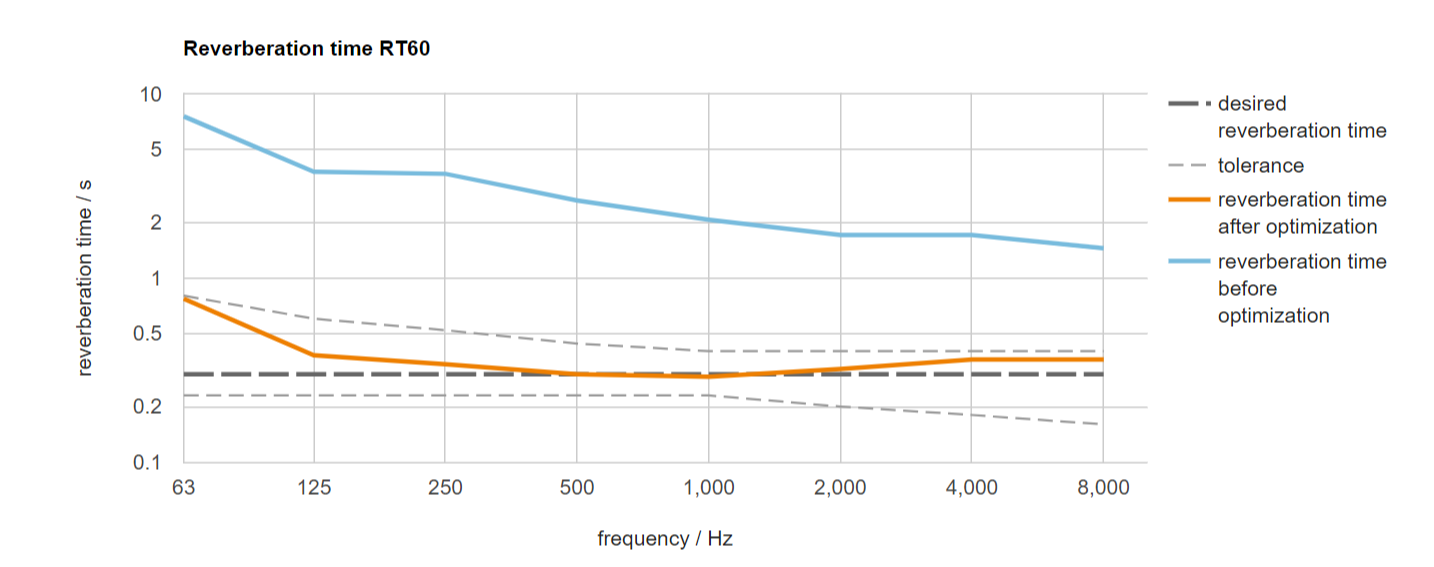No products
Reading the various acoustic websites when it comes to decay times or reverberation times one often generalizes too much by giving precise values. First I want to remind you that in a typical home room of about 20-30 square meters there is no real quarrel (RT60), but we can say that there is a decay time that can be measured using the free REW software. looking in particular for the RT30 voice, having said that you can also give a damn about these theoretical aspects because the most important thing is to have a time with a certain decay and a certain curve.
Does the decay or reverberation time have to be flat?
Often on the net it is said that the decay time must be flat, in reality there are tolerances that must be respected just as recommended by the EBU Tech documents. 3276 and ITU-R BS.1116-1 which mainly refer to listening rooms (control rooms for mixing and mastering), but these tips can also be put into practice for shooting rooms and vocal booths. Behind the reverberation time there are some secrets that however many internationally renowned acoustics do not reveal, the reverberation time in some cases must be flat, in other cases it must respect tolerances but must have a certain curve otherwise it could give the room a sound too boring, flat things are not pleasant in most cases, this is why some acoustic designers have created their own sonic signature. In the image below you can see dashed lines representing the recommended reverberation time tolerances.

What is the ideal reverberation or decay time?
Although many indicate target reverberation times, in reality there is no precise rule because the ideal reverberation time must be evaluated based on the type of use, based on the size of the room and the type of acoustic treatment. If you don't know there are various types of acoustic treatment criteria, the most popular are: RFZ, LEDE and Non-Environment. I state that I do not like the bad criteria which are very simple to put into practice but do not offer a nice sound to the room. The bad criterion consists in creating rooms that have completely absorbent walls in front of completely reflective walls, a more interesting criterion is the RFZ which is an evolution of the LEDE criterion and then there is the Non-environmental criterion which consists in eliminating from the room its character in order to perceive a more natural and uncompromising sound. Non-environmental rooms are generally very absorbent but not all acoustics love them because they tend to sound too dry, but they still allow you to have a very precise listening in a control room and are also excellent for recording instruments and voices as long as you add artificial reverb since they have a colorless sound.
How is the reverberation time in high-end recording studios?
The very high-end recording studios where the major international productions are recorded almost always have rooms based on the RFZ and Non-Environment criteria but also have a decay time curve that I will not reveal to you, if you are interested in designing an acoustic treatment that sets it apart from most other studios, please contact me.
Why choose my acoustic treatment service?
Here are some of the reasons to entrust me with the decay time modeling work:
- Acoustic treatment based on the school of thought of one of the most famous acoustic designers in the world, I refer to John Sayers from whom I learned many of his ways of working after years of experiments
- Recordings will not need many equalization interventions because the room will sound airy and detailed thanks to the slat wall technology that will allow you to have that typical American sound thanks to the use of wooden slats tuned to absorb the modal frequencies without excessively absorbing the highs frequencies
- From an aesthetic point of view it will be very nice to see the wooden slats on the walls
- The distinctive sound could help make your recording studio a reference point for many national and international artists
